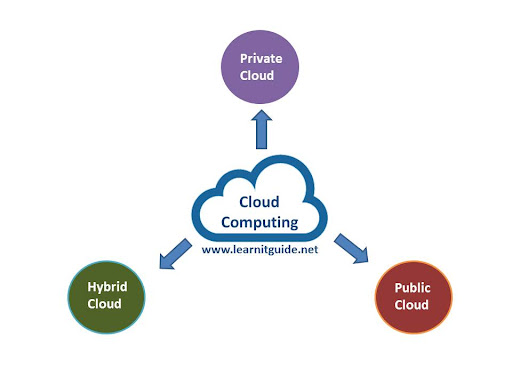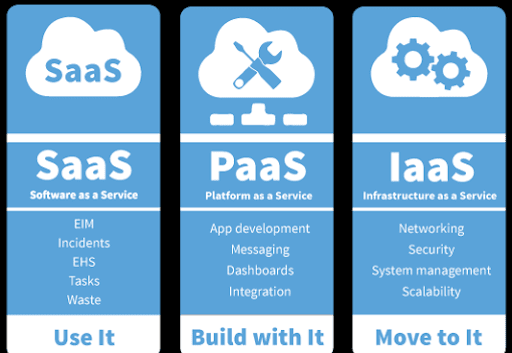Technology is no more just an insignificant tool for businesses in various industries. Rather, it is considered to be a route as a data-driven system for information flow, and the technology we are talking about here is cloud computing.
Cloud-based applications advancement has enabled corporations to conveniently record data by connecting various servers into a system. It is a pathway of data exchange that allows multiple networks in one located system.
Largely, businesses have to manage their available resources and make decisions within minimal time. For that, they have to go through various data records, which is never-ending work. Furthermore, categorically documenting the information of essential data requires a systematic format and lengthy paperwork.
So to overcome this muddle, Cloud-based applications elevate the data entry solution as it is a data service provider that manages numerous accounts simultaneously.
As we move further, you will know inside out of the Cloud computing types, their advantages and disadvantages in businesses, and the Cloud computing solutions.
So let’s explore ahead!
Types of Cloud Computing

There are three types of Cloud computing chosen according to the business system’s needs:
1. Private Cloud
It is a Cloud model that is built from the accessible resources of the company. This cloud computing can be said to be a company’s owned system as it utilizes its hardware and software components.
Although it incurs a great amount of cost to associate a team and establish data centers, still building a private cloud can provide boundless control and data monitoring for authenticated input.
2. Public Cloud
This cloud system is assigned to the third-party service provider for building external infrastructure. As the name suggests, the public cloud is accessible to multiple corporations and even to general users for synchronous data exchange.
Due to being built by amassing external resources, this cloud-based application is hence secured by a third-party service provider. Additionally, they provide maintenance and support services for agility and appropriate functioning.
3. Hybrid Cloud
It combines the working mechanism of private and public clouds. In this, the in-house IT team handles and looks over the sole company’s cloud system. The rest of the other cloud parts are assigned to the outsourced cloud service providers.
As it might seem can be a risky task, however, it proportionately distributes the data. So as the company keeps the integral database, meanwhile, it assigns substantial data to the third-party service providers.
Advantages of Cloud Applications in Businesses
1. Cost-Effective
Cloud-based application development services are the marked-down solution for the database. While the cloud system does not require investing in excessive hardware components for maintaining the data, it reduces the minimal costs by limiting it to the required subscriptions or other resources.
2. Speedy Performance
Just as there are both private and public cloud systems, the rest is centered around the business system integrated with one of these cloud-based applications. This is because both cloud models have different scalability criteria for the users’ data exchange and thus, maintaining the data speed. It also allows you to acquire the resources within minutes.
3. Efficient Data Flow
Due to the system being interlinked with different nodes of the network, it permits the users to synchronize their data in the system itself. However, only limited users are allowed to access the cloud server such as the company’s employees or client vendors.
4. Automatic Data Backup and Restoration
The system data is accessed by various users for data entry as there are multifold options in file options. For that reason, it has to be upgraded for storing their data or the current records of the company. Since it utilizes the internet as connectivity mode, it automatically saves the data till up-to-the-minute. Moreover, this data can be backed up when linked with the same account.
5. Software Integration
When the cloud service provider compiles the cloud server with the system, it provides all the functions and cloud-based applications of the latest version to lower the efforts of data customization. Given that the version constantly upgrades, it only needs minimal cost to improve the cloud functions.
Enterprise Application Integration
6. Convenient Accessibility
Before the introduction of cloud-based applications, users were limited to their systems with device accessibility. Now, as the cloud servers have a flexible account management system, it doesn’t require any specific operating system. It allows numerous users as long as they are permitted.
7. Reliability
The best aspect of cloud applications is their versions being enhanced within a few years. The administrator and the users get notified when they have suggested a new version with functional modifications.
8. Limitless Storage Capacity
Cloud applications encompass an extensive storage capacity as it consists of several applications and file formats. If the corporates need to expand it, they have to pay some amount for the subscription plan.
Money Making App Ideas for Startups
9. Collaborative Networking
In any organization, when the tasks are distributed among the various users, they don’t have to idle away hours on unnecessary documentation. As the cloud server bridge the connectivity within each network node, the users can save the data from any location.
Disadvantages of Cloud-Based Applications in Businesses
1. Vulnerabilities and Loopholes
It depends on the protocols integrated and users obtaining the data. Despite building a strong cloud application, still it is prone to unpredictable attacks even from known users as allowing them with confidential data can be a risky thing.
2. Dependent on Network Frequency
Cloud servers operate based on network strength. If the network connection persists to be poor given the environmental issues or other hindrances, this may lead to the server’s downtime and slow page loading.
3. Control Restrictions
Since the functions are all obtained from the cloud version itself, this restricts the users with control regulations. Users have no option but to rely on the cloud-based application’s infrastructure as a result of eradicating the hardware, software, and necessary configurations.
4. Possibility of Slow Loading
With the server’s accessibility to numerous users, the data storage gets over-flooded above its manageable capacity. Moreover, when the users simultaneously work on the same file or the server, it reduces the loading time of the files.
5. Vendor Lock-In
Gradually, when businesses want to shift their data from one cloud server to another, it becomes either a costly method or a difficult decision to get it done by a service provider.
Due to this arduous task, the businesses get stuck with the same server, resulting in vendor lock-in. If they somehow decide on transferring the data, they have to look for reliable cloud-based application development services.
Business Cloud Solutions
Cloud computing solutions refer to a coordinated infrastructure that is programmed in the system and connected with a myriad number of devices to enable optimized data flow management.
After all, it narrows down to the application of cloud models in the business. Hence, we have mentioned below the three important cloud-based solutions:

SaaS
Software-as-a-Service (SaaS) is a commonly used infrastructure in multiple organizations. It provides web application-like functions where it encompasses all the essential file applications in one place to collect, store, and process the data.
SaaS eliminates the need for external hardware and software integration, except for the strong network router.
PaaS
Also known as Platform-as-a-Service, it is an application managed and operated by the company itself without developing any cloud infrastructure. A third-party service provider gathers the necessary resources together to form an application within the existing cloud server.
IaaS
Infrastructure-as-a-Service refers to a service provider handling your infrastructure from servers to the network through either public or private cloud models.
The businesses are limited to the accessibility of the server’s API and dashboard to manage the application, data storage, and cloud modules like AWS. Other than that, the service providers check on the maintenance and services.
Key Takeaway
Cloud-based applications are a present-day solution to every enterprise’s data-organizing problem. Connecting to every single employee’s or vendor’s device for data assimilation comes across as a way to reduce the workload.
Nonetheless, it all depends on the business requirement and the accessibility criteria to only certain users. To this extent, your enterprise’s data remains secured and systemized. But, in the end, it resorts to the service provider you approach.
So, to integrate the cloud-based applications with regulated prototypes, approach a cloud-based application development service that has accessibility to suitable cloud modules.
Apart from this, if you have any doubts regarding cloud computing service providers, we will be available to guide you.
FAQs
1. What is Cloud computing for business?
Cloud applications are internet-based system that is interlinked with multiple network servers for efficient data exchange. For businesses, they need to keep updating their corporate data. So consequently, cloud server helps them with data functions like updating, sharing, processing, synchronization, and customization.
2. What are Cloud-based Solutions for businesses?
Cloud-based solutions are nothing but the cloud infrastructure integrated into the system. It is deployed by compiling the necessary prototypes to secure the data transfer. There are three types of Cloud computing:
SaaS (Software-as-a-Service)
PaaS (Platform-as-a-Service)
IaaS (Infrastructure-as-a-Service)
3. How does cloud computing reduce business costs?
Generally, any business requires to amass both hardware and software resources to establish data centers, and it needs to get maintenance services regularly. In the meantime, cloud applications eliminate these costs. All it requires is a monthly or annual payment to upgrade the cloud functions.



